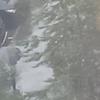https://www.ncbi.nlm...pubmed/26196303
That might make magnesium or copper salicylate an attractive item for fission hangover.
Especially since it can be cardio protective.
"Pharmacological activation of AMPK prevents Drp1-mediated mitochondrial fission and alleviates endoplasmic reticulum stress-associated endothelial dysfunction.
Li J1, Wang Y2, Wang Y2, Wen X3, Ma XN3, Chen W2, Huang F2, Kou J2, Qi LW4, Liu B2, Liu K5.
Author information
Abstract
BACKGROUND AND PURPOSE:
This study aims to investigate whether and how pharmacological activation of AMP-activated protein kinase (AMPK) improves endothelial function by suppressing mitochondrial ROS-associated endoplasmic reticulum stress (ER stress) in the endothelium. Experimental approach Palmitate stimulation induced mitochondrial fission and ER stress-associated endothelial dysfunction. The effects of AMPK activators salicylate and AICA riboside (AICAR) on mitochondrial ROS production, Drp1 phosphorylation, mitochondrial fission, ER stress, thioredoxin-interacting protein (TXNIP)/NLRP3 inflammasome activation, inflammation, cell apoptosis and endothelium-dependent vasodilation were observed. Key results "Silencing" of TXNIP by RNA interference inhibited NLRP3 inflammasome activation in response to ER stress, indicating that TXNIP was a key link between ER stress and NLRP3 inflammasome activation. AMPK activators salicylate and AICAR prevented ROS-induced mitochondrial fission by enhancing dynamin-related protein 1 (Drp1) phosphorylation (Ser 637) and thereby attenuated IRE-1α and PERK phosphorylation, but their actions were blocked by knockdown of AMPK. Salicylate and AICAR reduced TXNIP induction and inhibited NLRP3 inflammasome activation by reducing NLRP3 and caspase-1 expression, leading to a reduction in IL-1β secretion. As a result, salicylate and AICAR inhibited inflammation and reduced cell apoptosis. Meanwhile, salicylate and AICAR enhanced eNOS phosphorylation and restored the loss of endothelium-dependent vasodilation in the rat aorta. Immunohistochemistry staining showed that AMPK activation inhibited ER stress and NLRP3 inflammasome activation in the vascular endothelium.
CONCLUSION AND IMPLICATIONS:
Pharmacological activation of AMPK regulated mitochondrial morphology and ameliorated endothelial dysfunction by suppression of mitochondrial ROS-associated ER stress and subsequent TXNIP/NLRP3 inflammasome activation. These findings suggested that regulation of Drp1 phosphorylation by AMPK activation contributed to suppression of ER stress and thus presented a potential therapeutic strategy for AMPK activation in the regulation of endothelium homeostasis.
Copyright © 2015 Elsevier Ltd. All rights reserved."
(I wonder where Acetyl L carnitine fits in....
Edit: it inhibits fission as well: https://www.ncbi.nlm...pubmed/20550520)
Aging Cell. 2010 Aug;9(4):570-9. doi: 10.1111/j.1474-9726.2010.00587.x. Epub 2010 Jun 9.
Acetyl-L-carnitine protects yeast cells from apoptosis and aging and inhibits mitochondrial fission.
Palermo V1, Falcone C, Calvani M, Mazzoni C.
Author information
Abstract
In this work we report that carnitines, in particular acetyl-l-carnitine (ALC), are able to prolong the chronological aging of yeast cells during the stationary phase. Lifespan extension is significantly reduced in yca1 mutants as well in rho(0) strains, suggesting that the protective effects pass through the Yca1 caspase and mitochondrial functions. ALC can also prevent apoptosis in pro-apoptotic mutants, pointing to the importance of mitochondrial functions in regulating yeast apoptosis and aging. We also demonstrate that ALC attenuates mitochondrial fission in aged yeast cells, indicating a correlation between its protective effect and this process. Our findings suggest that ALC, used as therapeutic for stroke, myocardial infarction and neurodegenerative diseases, besides the well-known anti-oxidant effects, might exert protective effects also acting on mitochondrial morphology.
PMID: 20550520 DOI: 10.1111/j.1474-9726.2010.00587.x
Edited by zorba990, 16 June 2017 - 12:30 AM.
































 This topic is locked
This topic is locked





























